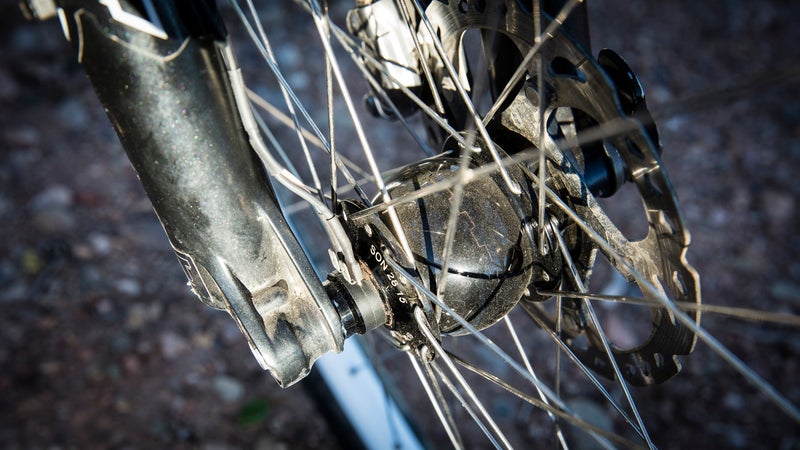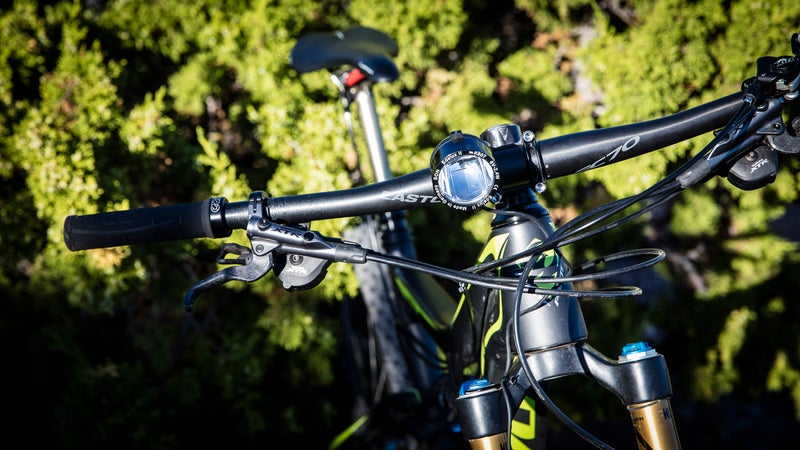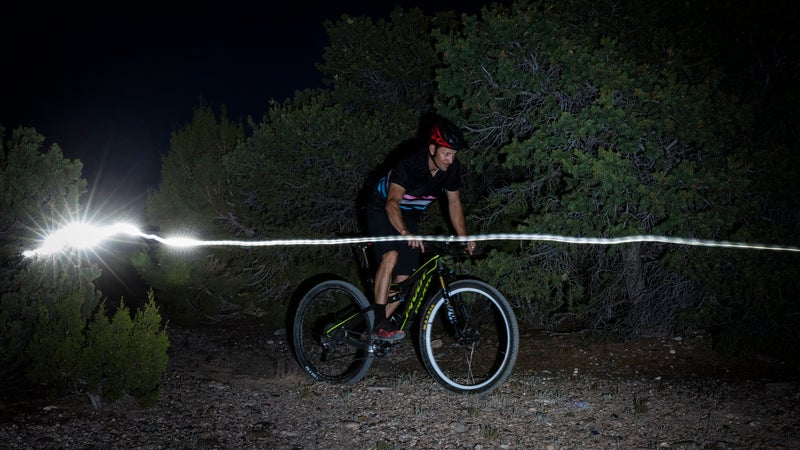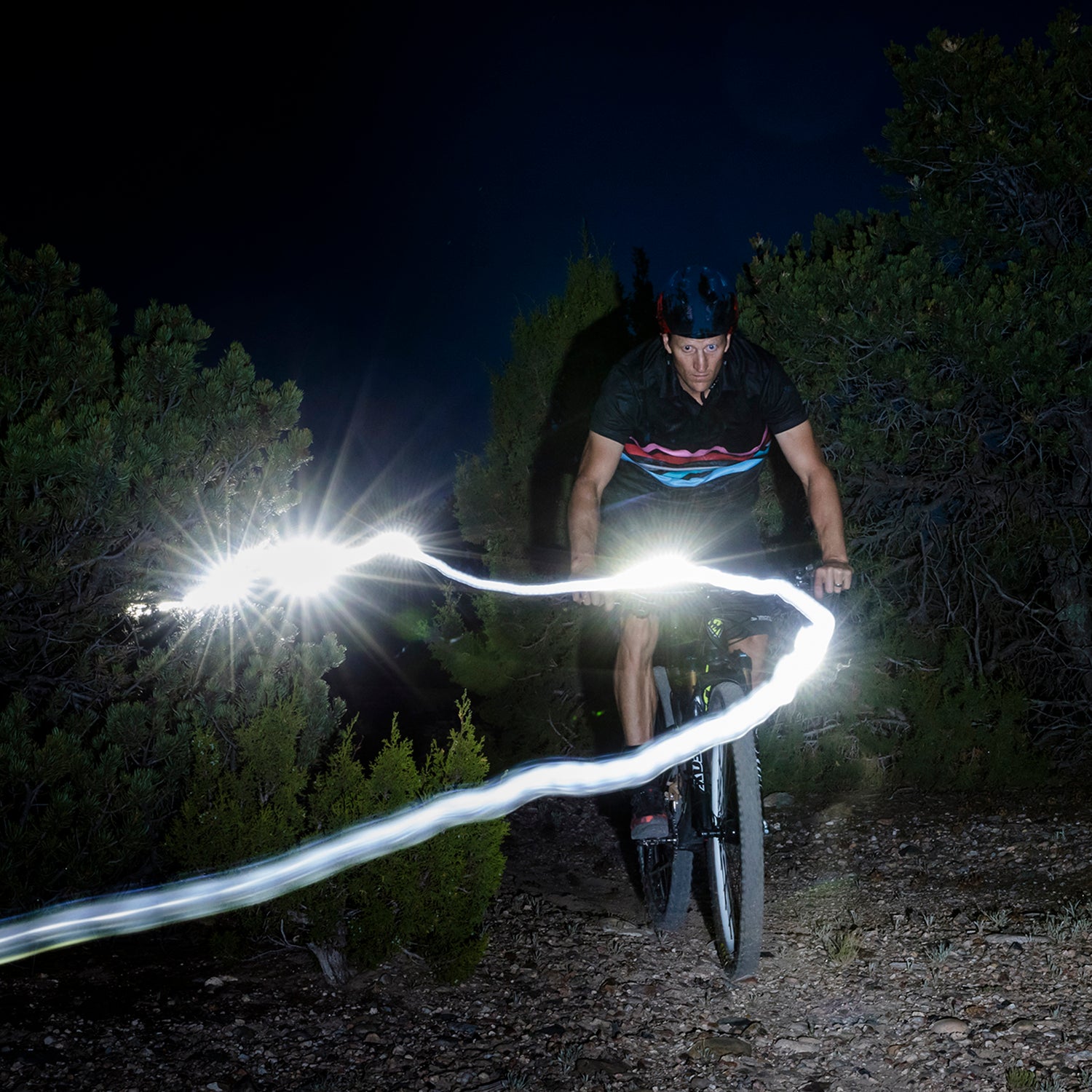Lighting for bikes has changed dramatically and rapidly over the past few years. I still remember some of my first 24-hour races a decade ago using halogens with batteries bigger and heavier than water bottlesÔÇöand you still had to carry two with you. LEDs changed everything, as the bulbs got brighter, the batteries smaller, and the run times longer.
But if you do any sort of long-distance riding, even with the new, small, high-power models, you will run out of light. And for commuters, it can be unnerving always wondering whether your lights are charged. (Though NiteRider has a cool monitoring system.)
In the lead-up to the Arizona Trail this season,┬áI decided to check out the latest in hub dynamosÔÇöan electrical generator built into the front hub that powers a light. Like me, you might remember the original generator hubs as those clunky, finicky, dim lights powered by a roller that collected energy by rubbing against the rim. But just like the rest of the light market, hub dynamo technology has leapt forward, with the German brand┬áSchmidt┬álargely considered to be at the head of the game. Peter White Cycles is the companyÔÇÖs U.S. distributor, and when I rang them up┬áand described what I wanted to do with the lightÔÇöride 850 pretty hellish trail milesÔÇöPeter White himself┬áoffered to send me his personal setup to test.┬á
The system he sent: a 29-inch wheel built around a hub (15mm thru axle) with a 32-hole Velocity Blunt* rim; a light; and a , a handy contraption the size of two matchboxes that lets you charge electronics including GPS and phones from the hub. Setup was a snap. Install the wheel on the bike, mount the headlight to the bars, and then plug the light into the two-prong adapter on the hub. Simple. White already had his plug setup with piggyback connectors, meaning the USB-Werk simply plugged into the hub, too.

For all of you luddites like me who have bad memories of old-school generator hubs, hear this: the new hub dynamos, and especially this one from Schmidt, are absolutely on a par with the new battery-powered LEDs. And since the SON hub uses magnets for energy collection, thereÔÇÖs virtually no┬ádrag or penalty when running the light.
The quality of the light from the Edelux II was soft, slightly blue, and had an even spread and a very wide range. (White has a great on his site.) Schmidt rates their lights in luxe, not lumens, so comparison to most models on the market is tough, but the Edelux II produced at least as much light┬áas my trusty Bontrager Ion, which is 700 lumens. The beam pattern is made for the road, meaning the concentration is downward and thereÔÇÖs a hard, darker edge at the top to keep light out of driversÔÇÖ eyes. However, I didnÔÇÖt find this an issue on trails, as I simply arced the light a bit higher.

A few people told me that the problem with hub dynamos is that they became too dim to ride by at slow speeds. ItÔÇÖs true that the light grew a bit dimmer below around four┬ámiles per hour, but not by muchÔÇöthe system is good at regulating. One benefit of these systems is that the light stays on after you stop movingÔÇöfor around two minutes with my Edelux II. This presented a bigger problem to me than the dimming issue because after that two minutes, youÔÇÖre left in darkness, which makes looking at a map or fixing a flat tough. So while the Edelux II alone might be fine for daily commuting, if youÔÇÖre spending a lot of time out, a helmet┬álight┬áis a good backup.┬á
The USB-Werk was just as good. Simply plug in your Garmin or iPhone, and it gets a charge from the power you generate from pedaling. One complication: both of these devices drain faster than the USB-Werk can replenish, so to keep powered over long durations (like multiple days on the AZT), youÔÇÖd need to run with the devices off and charging at least part time. Still, the ability to have both light and electronics power virtually indefinitely is a revelation.
I spent hundreds of miles riding this system on techy dirt and singletrack preparing for the AZT, and I had no issues, either with the light quality and quantity or with the durability of the hub and wiring, which was my initial concern. ItÔÇÖs true that the bar-mounted light could be tricky in twisty, tight trail as it didnÔÇÖt illuminate sharp turns, drops, and rises until after you initiate the maneuver with the bars. But thatÔÇÖs a limitation of any bar-mount light and the reason that most mountain bikers run a helmet light, too. For the AZT, I planned to run the Fenix LD22, which is pretty minimal at 300 lumens, but between it for side spotlighting and the Edelux for fill, I had plenty of light for even the techiest terrain.

As it turned out, a week before the AZT, I was forced to switch bikes because of a fit issue that was causing me knee pain. This switch exposed whatÔÇÖs probably the SON hubsÔÇÖ biggest challenge: because the bike that I switched to had a 110mm fork while the hub light was for a fork with 100mm spacing, I couldnÔÇÖt run the Edelux II for the AZT. ThatÔÇÖs not a failing of the light. Rather, itÔÇÖs an indictment of the constantly changing standards in the industry. (Schmidt has done an exceptional job of keeping up, with virtually every hub standard covered, including 110mm and even fat bikes.) Still, before you invest in a hub dynamo system, remember that you could face compatibility issues if you decide to upgrade bikes.
Even though I didnÔÇÖt ride the AZT with the Schmidt, White was generous enough to let me hang onto it for several months after, and I logged about another┬á500┬áproblem-free miles. The conclusion that I came to was that, before I do another big endurance ride,┬áI will absolutely invest in a hub dynamo. The simplicity and peace of mind of having constant, high-quality light without worrying over batteries┬áis a massive advantage over any other lighting option.


